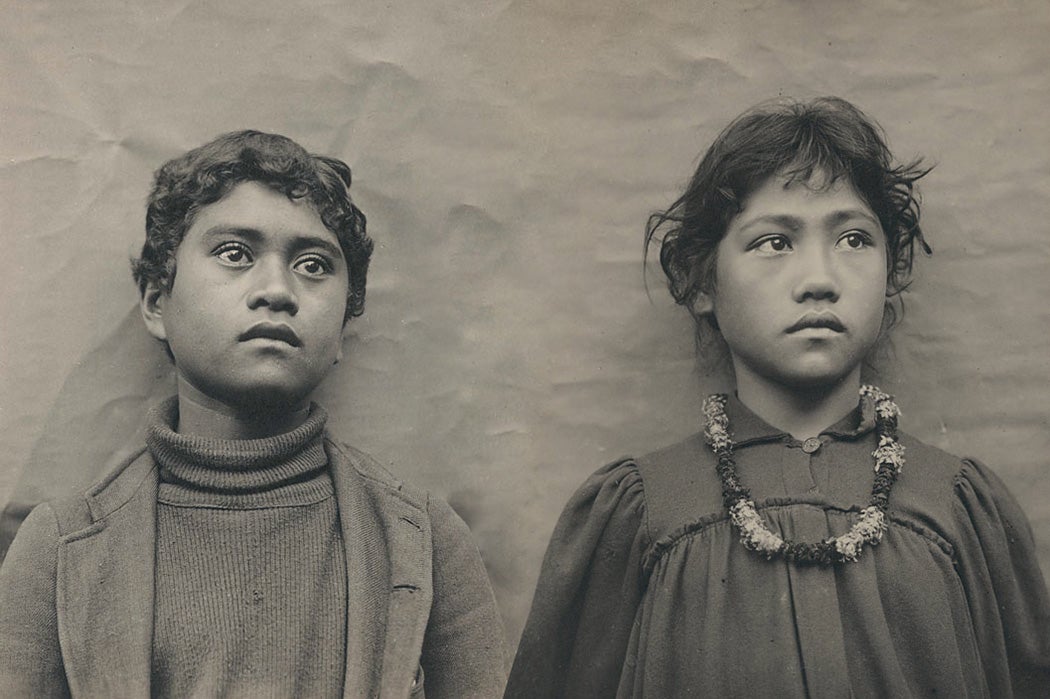From the Progressive Era expansion of urban education for European immigrants to the brutality and cultural genocide of Indian boarding schools, US public schools have served to assimilate young people to white, Anglo culture. Education historian Michelle M. Morgan writes that this was also true in US colonial territories outside the mainland, including early twentieth-century Hawai‘i . There, administrators pushed teachers and students to speak standard American English and fought against Asian influences in classrooms.
Morgan writes that the colonial educational system in Hawai‘i began more than fifty years before the United States formally annexed the territory in 1898. American businessmen and missionaries joined with local leaders to develop a system modeled on common schools in the United States. To some independence-minded leaders of the indigenous Kanaka Maoli community, the schools were a way to prove their people’s “civilized” nature.
“Schools strove to instill thrift, competition, and a Protestant work ethic into Kanaka Maoli children while the children of American elites and missionaries attended private schools,” Morgan writes.
Hawai‘i’s schools enrolled not only Kanaka Maoli children but also children of Asian workers employed on the territory’s plantations. The schools recruited some of their teachers from the United States, but that was expensive, and many of those teachers weren’t committed to staying. Within a few years of annexation, administrators were working to develop a corps of local teachers who were both knowledgeable about regional society and committed to “Americanization.”
In a 1920 essay, Thomas H. Gibson, deputy superintendent of Hawai‘i’s public schools, called for solving “the problem” of Americanization in the territory: “That means teachers who can teach American ideals and language, teachers who are a part of the community in which they live… We must Americanize the rising Oriental generation or be submerged by it. We must have the teachers to do this.”
Gibson argued that Kanaka Maoli often made good teachers, since that group had “been absorbing American ideals for a century,” though he warned that they were often “not ambitious and aggressive.” In practice, Kanaka Maoli teachers reported being discriminated against and dismissed as having low standards.
In contrast, Gibson wrote that Asian, particularly Japanese, young people were interested in teaching, but ill-suited to the project of Americanization, “speaking a foreign tongue at home, trained in foreign ideals[.]” By 1925, all teachers were required to be US citizens.
Weekly Newsletter
At the same time, school administrators increasingly emphasized the importance of teachers speaking standard American English. But, as a 1926 report complained, many Kanaka Maoli teachers returned to speaking Hawai‘i Creole English, or Pidgin, in the classroom.
Despite this, Morgan writes, most of the teachers embraced the mission of Americanization. They wanted their students to escape a life of plantation labor, and the route to that was assimilation into a middle class defined by white Americans. Young people who failed, or refused, to assimilate had limited options. Which, of course, is much the same story that has faced working-class people of all ethnicities throughout the country’s history.
Editor’s Note: This story was updated to correct the diacritical marks in Hawai‘i.
Support JSTOR Daily! Join our new membership program on Patreon today.







